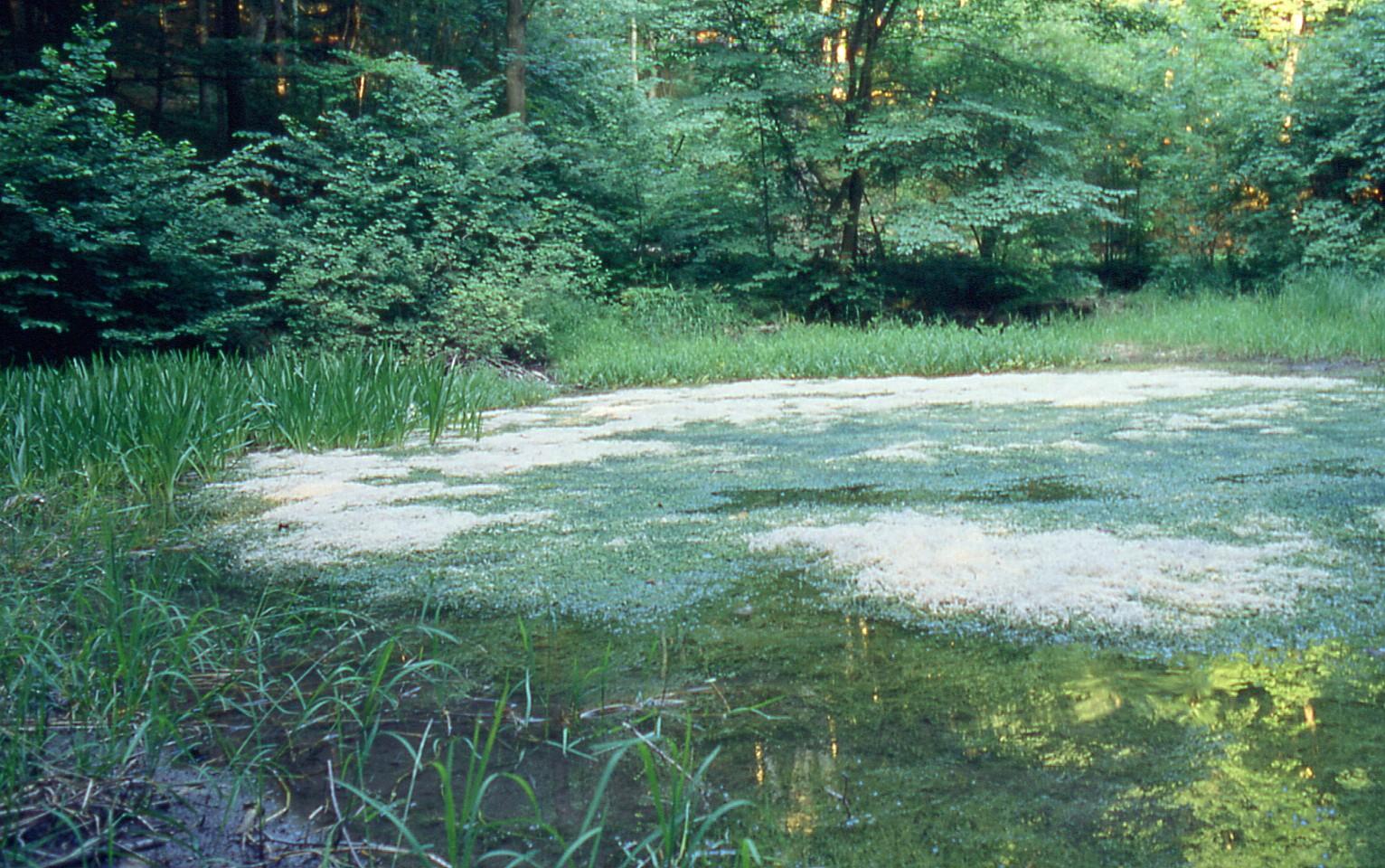Aquatic Vegetation Spotlight: Algae
In general, aquatic plants can be sorted into five different categories: (1) algae, (2) floating plants, (3) submersed plants, (4) emersed plants, and (5) marginal plants. Floating plants include non-rooted plants like duckweed and rooted plants with floating leaves like waterlilies. Submersed plants grow from the bottom of a water body and remain primarily under water. Coontail is an example of a submersed plant. Arrowhead is a type of emersed plant, where most of their leaves and flowers are above the water and do not float on the surface. Lastly, plants that occur around the bank of a water body, beyond the water’s edge, are considered marginal plants. These include cattails and reeds. For this article, let’s focus on algae.
Most freshwater systems have species of algae living within them. Algae play an important role in aquatic ecosystems such as food chain support and shelter. In general, freshwater algae comes in three forms: planktonic, filamentous, and chara.
 Planktonic algae are small organisms that give your pond that greenish brown hue. They make up the base of a pond’s food chain. If you want a healthy fishing pond, you’ll need some planktonic algae. When nutrients are high, planktonic algae expands rapidly or “blooms”. After the bloom, the algae die and decompose, causing a drop in available oxygen in the water. When blooms are moderate to small in size, organisms withing the waterbody remain unharmed. When blooms become large, fish kills are possible because of the lack of oxygen in the water. To reduce the chances of large planktonic blooms, nutrient inputs need to be addressed.
Planktonic algae are small organisms that give your pond that greenish brown hue. They make up the base of a pond’s food chain. If you want a healthy fishing pond, you’ll need some planktonic algae. When nutrients are high, planktonic algae expands rapidly or “blooms”. After the bloom, the algae die and decompose, causing a drop in available oxygen in the water. When blooms are moderate to small in size, organisms withing the waterbody remain unharmed. When blooms become large, fish kills are possible because of the lack of oxygen in the water. To reduce the chances of large planktonic blooms, nutrient inputs need to be addressed.
Filamentous algae is made up of long strands of slimy material that may form floating mats on the surface of a waterbody. While it does provide food and shelter to some organisms, it also has the ability to clog water filters and screens and greatly reduce the amount of sunlight reaching the bottom of a pond. Like planktonic algae, filamentous algae grow rapidly when nutrients are added to the water. The best way to remove filamentous algae is by raking.
The final type of algae is chara. Chara resembles a submersed plant in that it is anchored to the bottom of a pond. It is long and thin with short leaf-like structures extending from its center. Chara does not extend beyond the surface of the water and provides shelter for many types of aquatic insects and fish.
Finding the right balance of algae in your pond is an important step in managing your pond for success. For more information about aquatic vegetation that could be growing in your pond, visit C667 Aquatic Plants and Their Control (ksu.edu).
Back to Natural Resource Agent articles